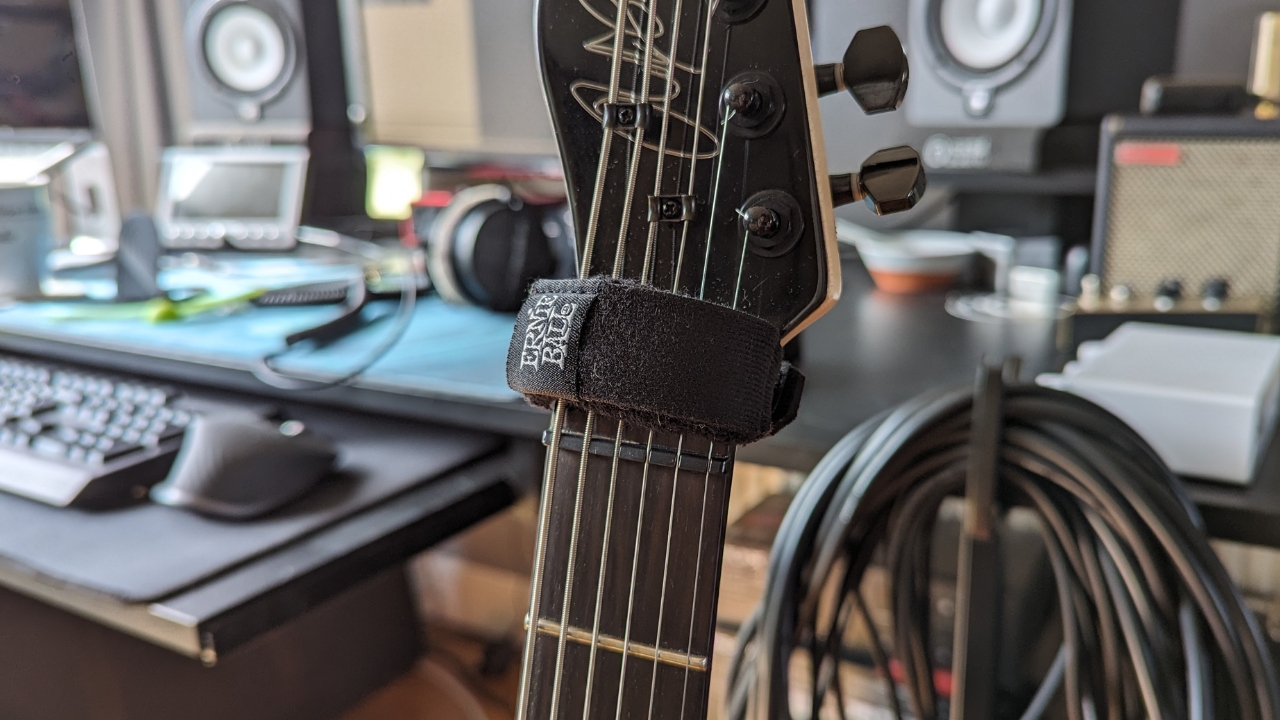
The humble fretwrap may not seem like much more than a simple piece of fabric, but it's actually a powerful tool for getting a cleaner and more controlled sound out of your guitar. Particularly useful in recording situations and for advanced techniques like two-hand tapping, slap bass, and sweep picking, this low-cost tool could be just the thing to help you take your playing to the next level.
I’ve been using a fretwrap for over a year now on my baritone, and I’ve found it made a noticeable difference to my playing. I record a lot of guitars both for my band and when testing products for reviews, and the fretwrap provides an easy way to clean up the sound. It’s a subtle difference, and by no means a substitute for effective string muting technique, but on a drop-tuned guitar, I’ve found it significantly decreases sympathetic resonance during regular playing, and is especially useful when tapping or sweeping.
If you’re wondering whether or not you should be using a fretwrap for your guitar, then you’re in the right place. We’re going to examine the fretwrap in detail, find out how it works, when you should use one, and how to use it effectively. Let’s get started…
What is a fretwrap?

Also known as a string muter or string damper, a fretwrap is a simple yet ingenious device that controls extraneous string noise. Typically consisting of a band of material with a foam or fabric pad attached, it wraps around the nut or upper neck of your guitar, reducing sympathetic resonance caused by your strings.
The fretwrap as we know it today does have some roots in guitar history. Guitarists have been wanting to damp the strings ever since the fifties, largely to help tame the feedback that came from using amplified hollowbody guitars of the time.
The first instance of a dedicated product to solve this issue was George Van Eps' string damper. With a patent issued in February of 1953, this device was designed to replace the truss rod cover of a regular guitar and featured a metal arm with a felt pad on it that reached over the nut to mute the strings.
It was used by American jazz guitarist Herb Ellis and was very briefly licensed to Gibson for some prototypes, with Van Eps canceling the deal before they could make it into wider production. Scotty Moore, guitarist for Elvis Presley's backing band, had one on his Gibson 63 Super 400 CES, which was famously used by Elvis during his 1968 'Comeback Special' for NBC-TV.
In the modern era, before fretwraps became a product as such, many guitarists would use a scrunchie, handkerchief, or any bit of fabric to wrap around the neck of the guitar when in the studio. Van Eps' idea does continue to have fans though. Michael Angelo Batio has a signature string damper device that he uses for his two-hand tapping acrobatics that's very much inspired by the Van Eps device as does Jennifer Batten, who's played with Michael Jackson and Jeff Beck amongst many others.
How does a fretwrap work?
To understand how a fretwrap works, we need to understand what sympathetic resonance is. When you pluck a string on your electric guitar or bass, it vibrates at a particular frequency dependent on its length, tension, and mass. This vibration can cause other parts of the guitar to vibrate too, if their frequencies are closely matched. It could be other strings, the body, or your hardware, and is part and parcel of what gives the guitar its unique overtones and harmonics.
Of course, sometimes you don’t want these resonances happening. These noises can creep into your recordings or your live playing, making things sound messy even though you’ve got absolutely no control over them. It can also induce unwanted feedback when playing at high volume or with a lot of gain.
When applied correctly a fretwrap can neutralise the sympathetic resonance of the strings, creating a cleaner sound. A fretwrap can also help with the tonal balance between open and fretted notes when placed correctly. Again this helps even things out when recording or playing live which can give you a more professional and polished sound.
How do I use a fretwrap?

There are a few different ways to use a fretwrap depending on what you’re doing. You will need to find the sweet spot for your individual guitar however, as the placement can make a big difference even when moving in very small amounts.
If you’re planning on using it behind or on the nut then you’ll want to spend some time finding that sweet spot. Once that’s done you can just leave the fretwrap in place from that point onwards and it will help tame unwanted resonances in the background.
If you want to use a fretwrap for some work higher up the neck then you can pull it further down the neck. You’ll want to make sure it is positioned over a fret that doesn’t easily produce natural harmonics, so the 1st, 4th, or 6th frets are best. These aren't golden rules however, each guitar is different so you’ll want to experiment to find the best positioning for your particular guitar or playstyle.
When should I use a fretwrap?
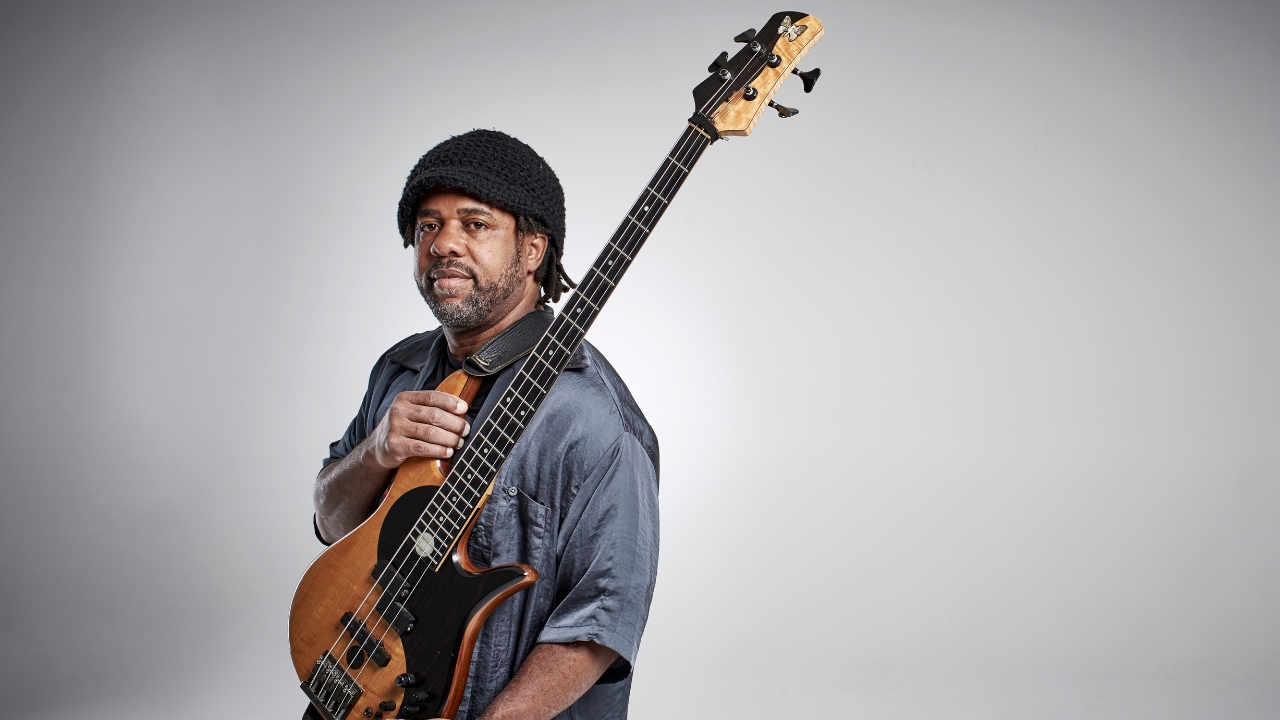
Arguably the most useful scenario for a fretwrap is when you’re recording guitars. It can clean up your playing in general when placed behind the nut and if your piece doesn’t have any open strings, then you can pull it further down the neck to make things even cleaner.
For those who like to two-hand tap or sweep pick, a fretwrap is a super useful tool. It’s not a replacement for an effective technique, but it will help you get a more polished sound. Some guitarists think that this 'cheating', but guitar isn't a competition. A fretwrap is just another tool for you to use. If it's good enough for Guthrie Govan then I'm perfectly happy using one!
Many bassists use fretwraps too, whether recording or playing live. Learning how to mute strings is an important part of mastering the bass, where sympathetic resonances are a lot more present due to the thicker strings.
A fretwrap helps you control these resonances more easily and is especially useful when using the slapping technique. Bassists have been using fretwraps or making their own for a long time, and it's only with the explosion of extended-range guitars in recent years that guitarists have gotten the bug too.
Conclusion

Fretwraps are an excellent addition to any guitar player’s arsenal, whether you’re playing advanced techniques or not. If you’re recording your guitar, then it’s a must-have for getting a clean sound, and a powerful tool for polishing your recorded tones. Many pro guitar players use them, so don't let internet forums and YouTube videos that claim 'cheating' put you off using one yourself.
They're low cost too, making them accessible to the vast majority of guitarists. You'll need to choose a different size fretwrap depending on your particular instrument. To make things easier for you, we’ve picked out a few of our favorite fretwraps to get you started, with options to suit electric guitars, bass guitars, and extended-range instruments too.
Our top picks
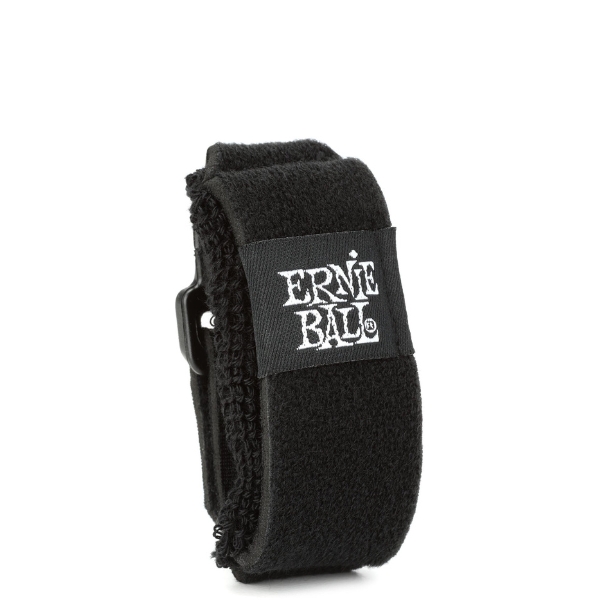
If you've got a regular six-string or four-string bass guitar, then the Ernie Ball Fretwraps small size will be a perfect match. The size means it will be tight enough to dampen the strings effectively, and we like the relatively subtle branding on it, which will blend in with pretty much any instrument.
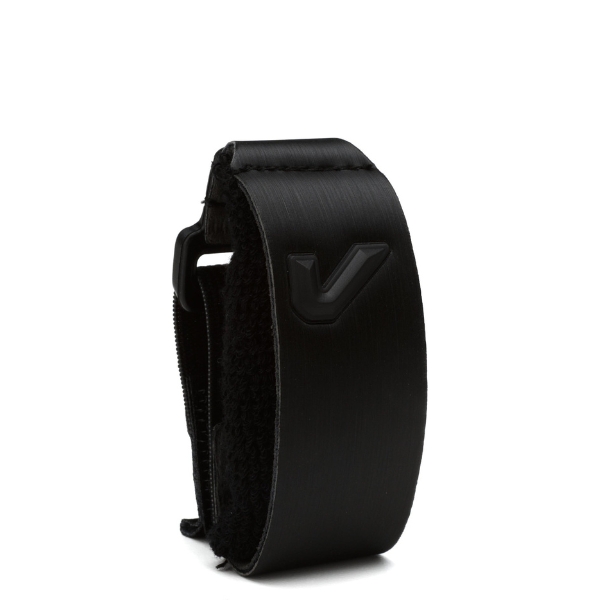
If you're playing a 7-string guitar or 5-string bass, then you'll want to go for a medium size fretwrap to ensure it fits properly over the neck. We love the stealthy look of this GruvGear fretwrap, and the adjustable band means you can go all the way from slight resonance taming to full on muting of the strings.
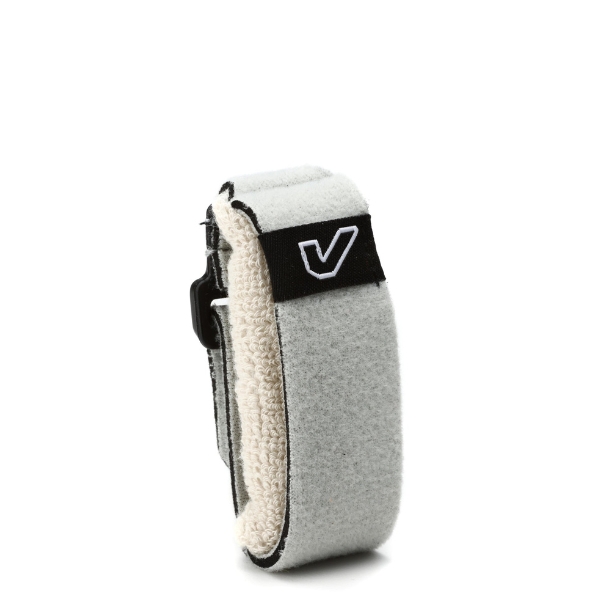
If you're all about the low end and play a six string bass or an eight-string guitar, then you'll need a large fretwrap to cover that huge neck. We love this stone-colored fretwrap by GruvGear, which is perfect for extended range instruments. Gruv Gear fretwraps come in a variety of colors to match your guitar's finish too.







